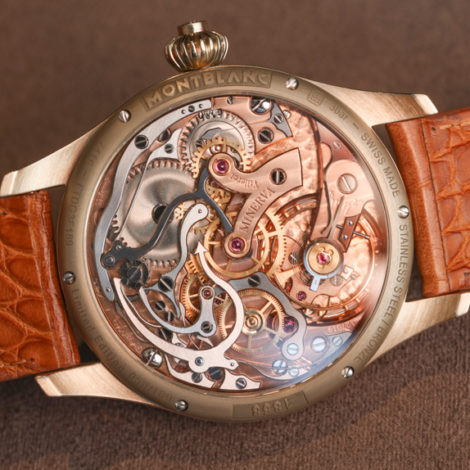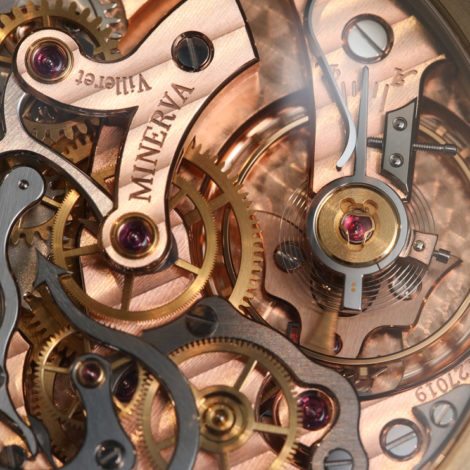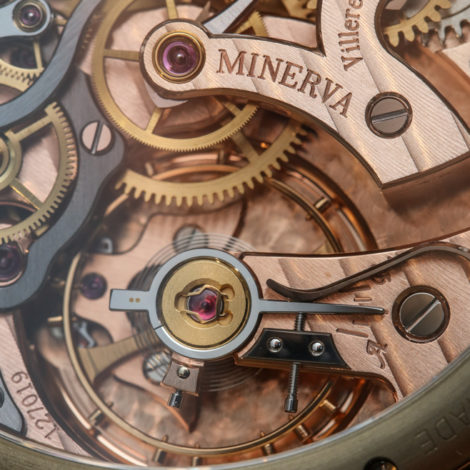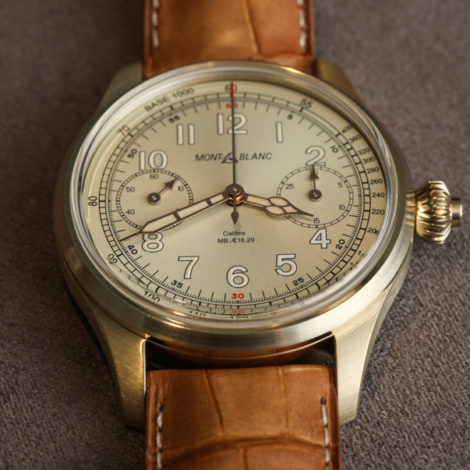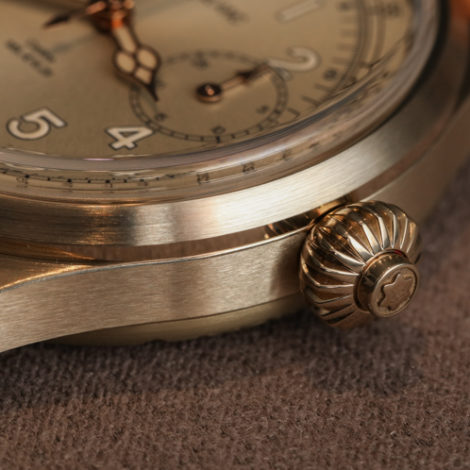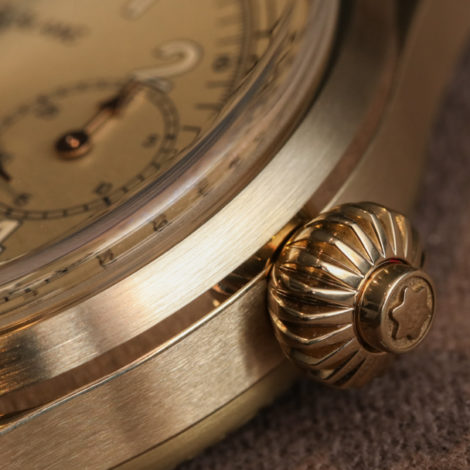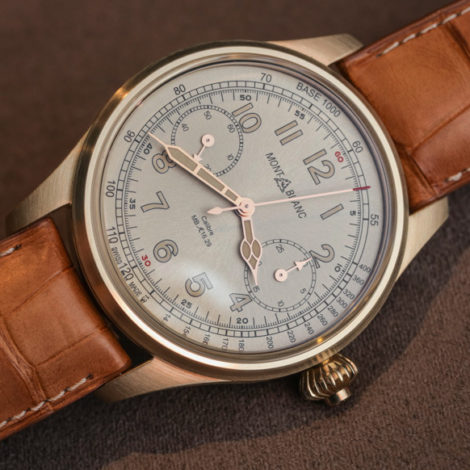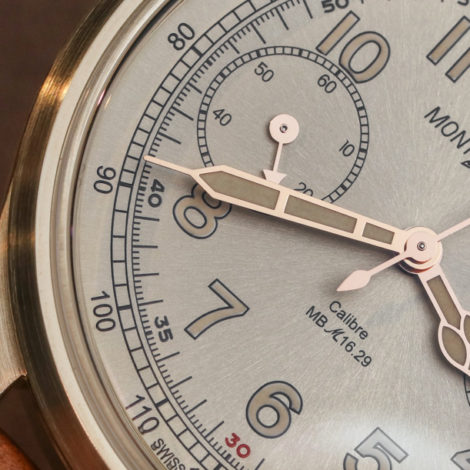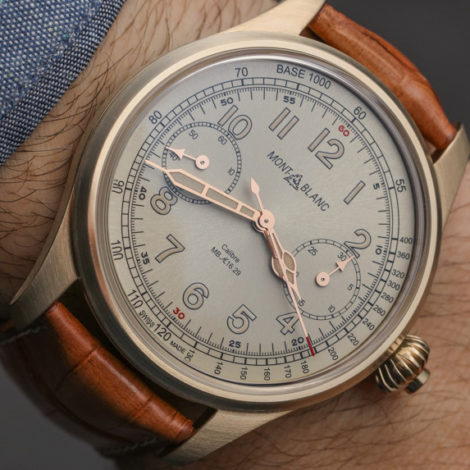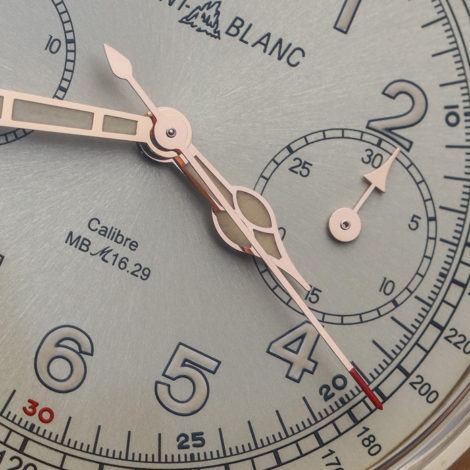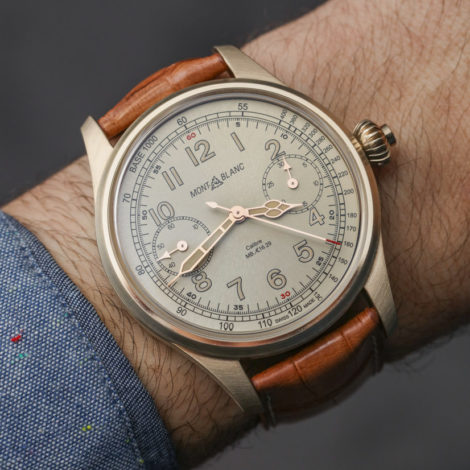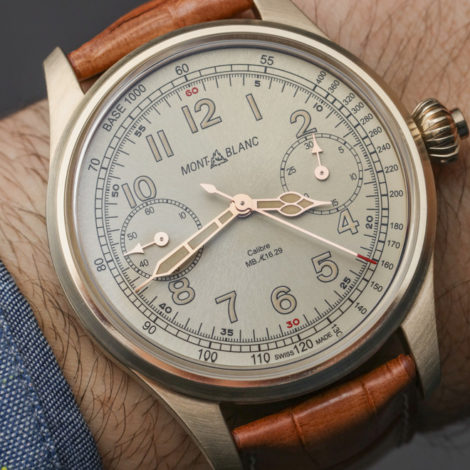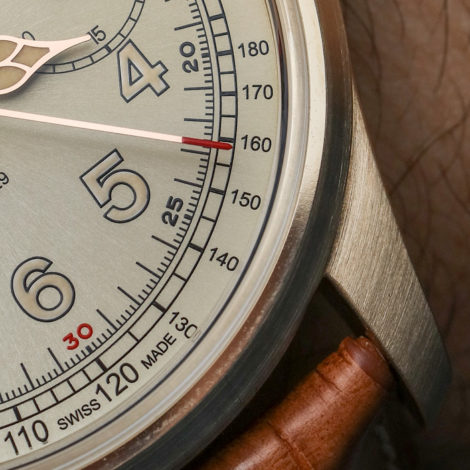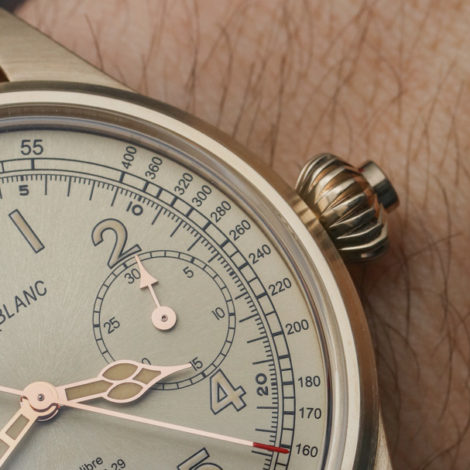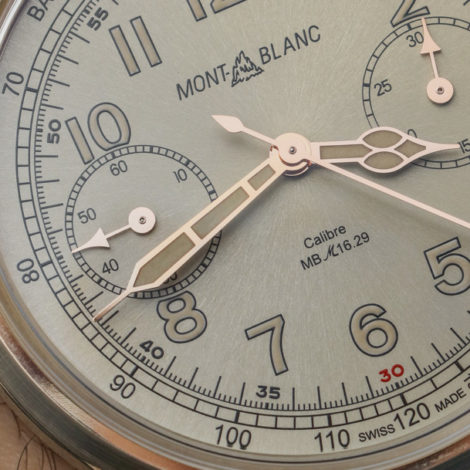
Pre-WWII chronographs built by Minerva are among some of the most criminally underrated vintage watches of that particular era, so it should come as no surprise that with Montblanc’s purchase of the Villeret-based manufactory in 2004, we’d see plenty of subsequent visits to the archives, as well as implementation in Montblanc’s modern offerings. This has been executed in various forms to great effect – including the stainless steel 1858 Chronograph Tachymeter introduced in 2016, but what we hadn’t seen done until now at Montblanc on a brand level, is any execution in bronze. Revealed at SIHH 2017, the Montblanc 1858 Chronograph Tachymeter Bronze follows the execution of its 2016 predecessor – a vintage-inspired monopusher chronograph done in bronze.
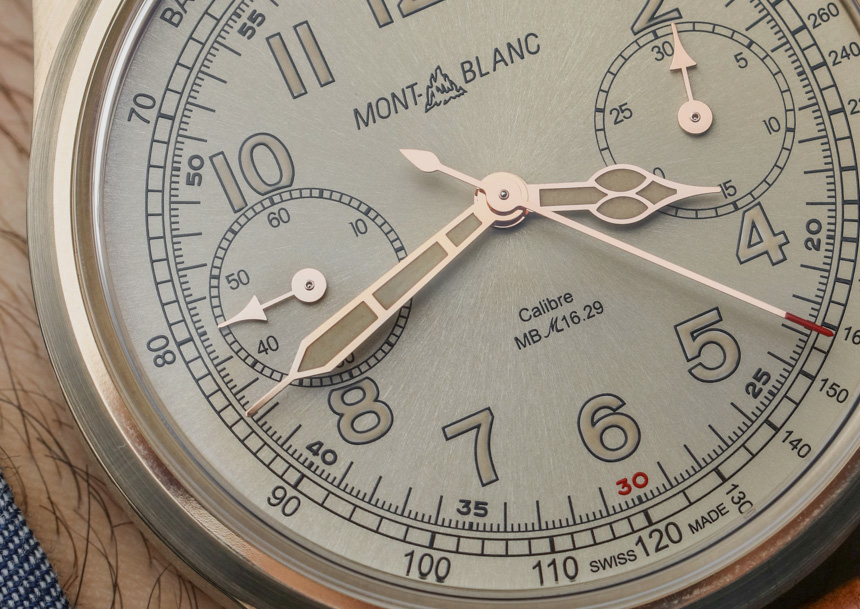
This time around, we’re treated with a few new tweaks around the same manually-wound movement characterized by its bi-compax dial layout. Most notably, the case is now rendered in a satin-polished bronze – another signal that the ‘bronze age’ trend in watchmaking is still carrying some steam. And, while most might argue that the marine-grade alloy is best reserved for dive watches like the Tudor Black Bay Bronze, the case material has also seen enough success with other race and aviation-themed watches, like the Zenith Pilot ‘Extra Special’ line (whose Type 20 Chronograph we went hands-on with earlier this year), so it should come as little surprise that Montblanc seeks to add its own unique patina to the mix. Better late than never, right?

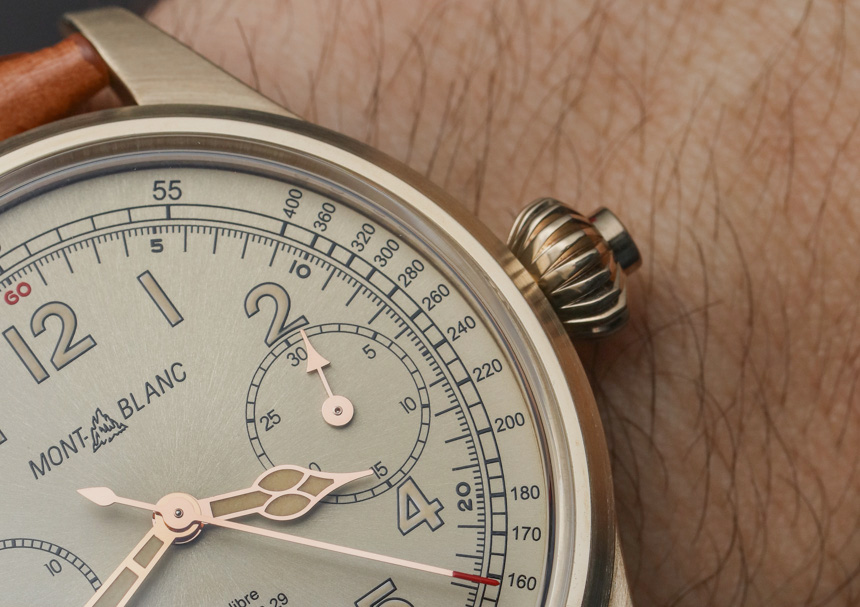
The new 1858 Chronograph (named so in observation of Minerva’s founding year) case gets a few aesthetic tweaks as well; particularly a new champagne-colored sunray dial, which is a treat in ‘just’ the right light, while complementing the warm, vintage aesthetic of the bronze case. The luminous cathedral-shaped hour/minute handset and the arrow-shaped chronograph hands also channel the vintage vibe to a tee, but where the watch starts to lose points against the source material comes in its admittedly ‘very’ modern 44mm case. It doesn’t wear overly large, however, and the neutral, earthy tones of the bronze and the dial mute those proportions somewhat. It’s fitted to a tan crocodile leather strap with eggshell-colored stitching, which complements the bronze and champagne hues beautifully.
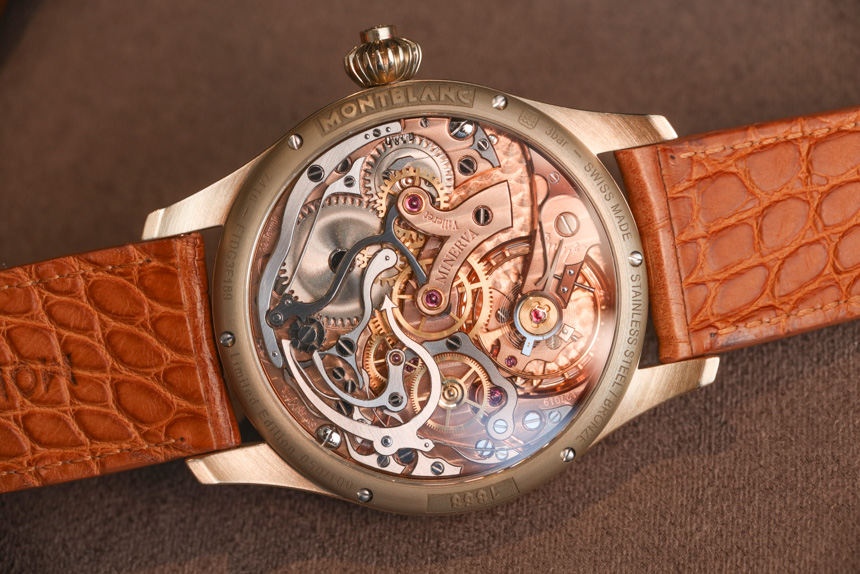

The Montblanc 1858 Chronograph Bronze is powered by the MB M16.29, which is a fully in-house manufactured column wheel movement designed to mimic the behavior of the 17.29 pocket chronograph movement, a Minerva-portfolio caliber which dates to the early 1930s. However, the modern M16.29 is similar only in actuating behavior to its inspiration – the movement is home to some otherwise extensive modifications which contribute to the back of the watch being the real star of the show.
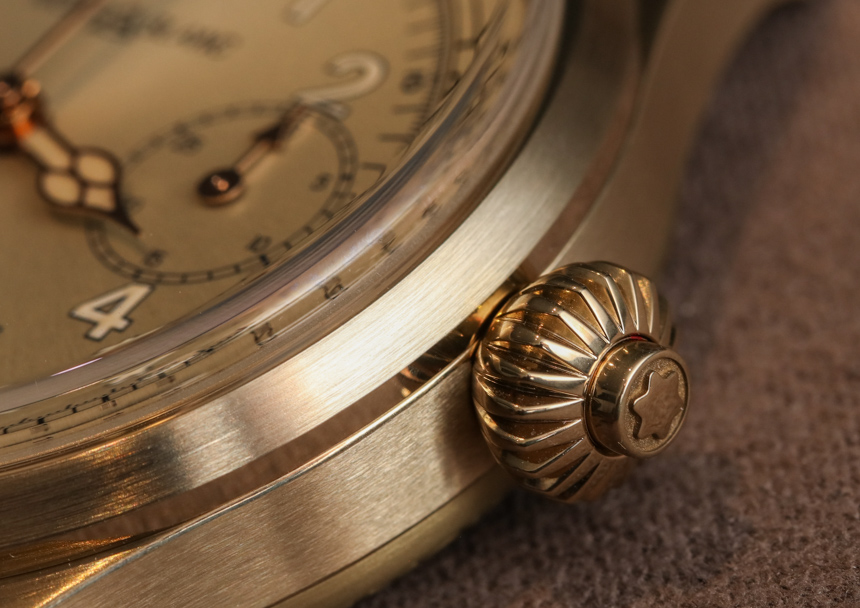
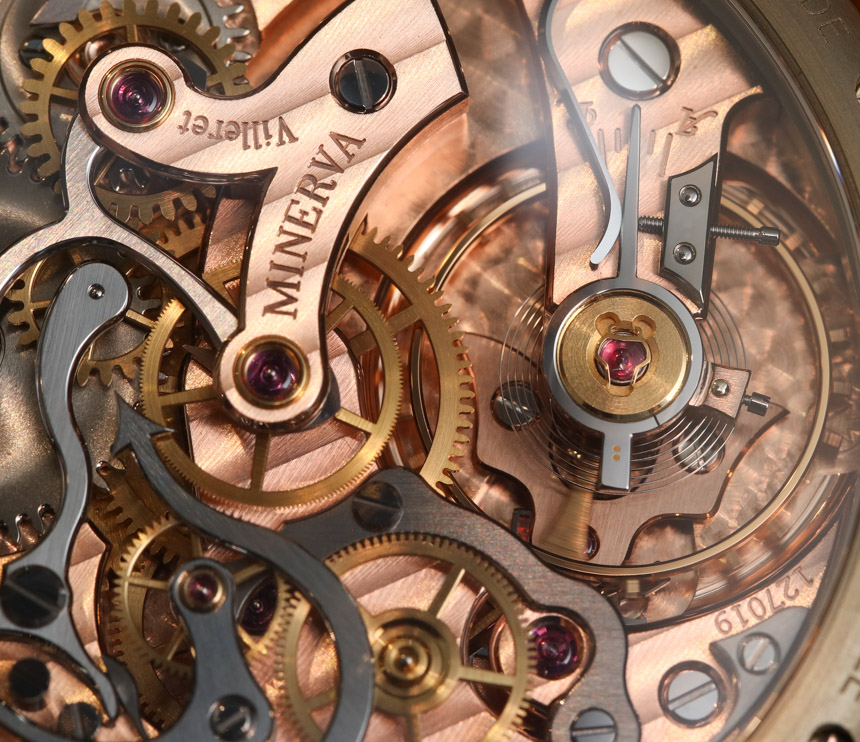
At first glance, it’s the unique horizontal coupling and V-shaped chronograph bridge that catches the eye, but a closer examination reveals some downright impressive color-matching to the components themselves. Select bridges are in fact, rose gold-plated, yielding a level of cohesion (front and back) and contrast that’s otherwise unheard of at this price point. It’s also a great visual example of how Montblanc’s investment in Minerva has brought out the very best in both names – and nobody wins more than watch fans.
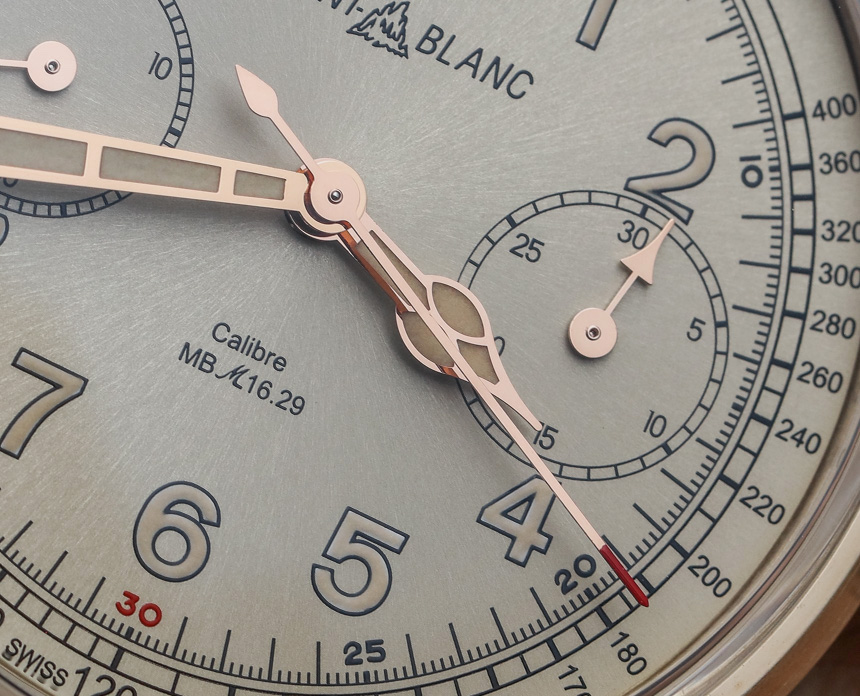
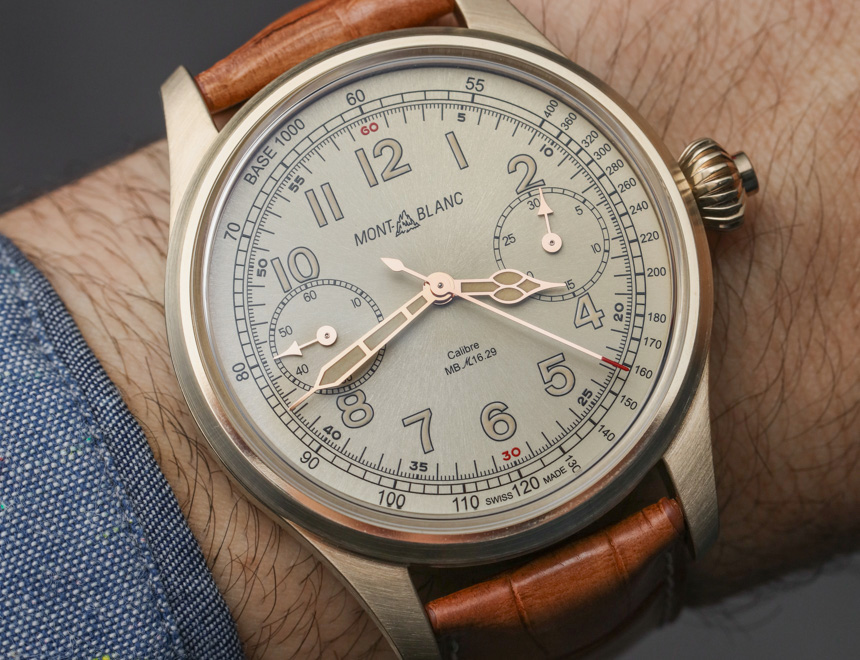
On the chronometric front, the movement itself hums at a relatively low 18,000bph, but it’s a rate that grants a generous 50 hour power reserve. Like the traditional pocket watch chronograph calibers upon which it’s based, all three actuating functions (start, stop and reset) of the 1858 Chronograph are performed by the single pusher at 3:00. It makes for a slightly elongated crown length, but it also removes the pair of typically present pushers, yielding the cleanest possible case design for a chronograph.
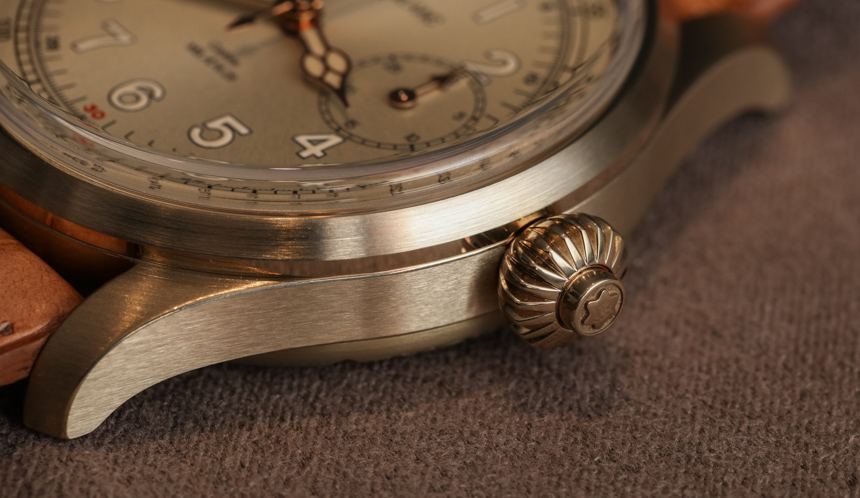
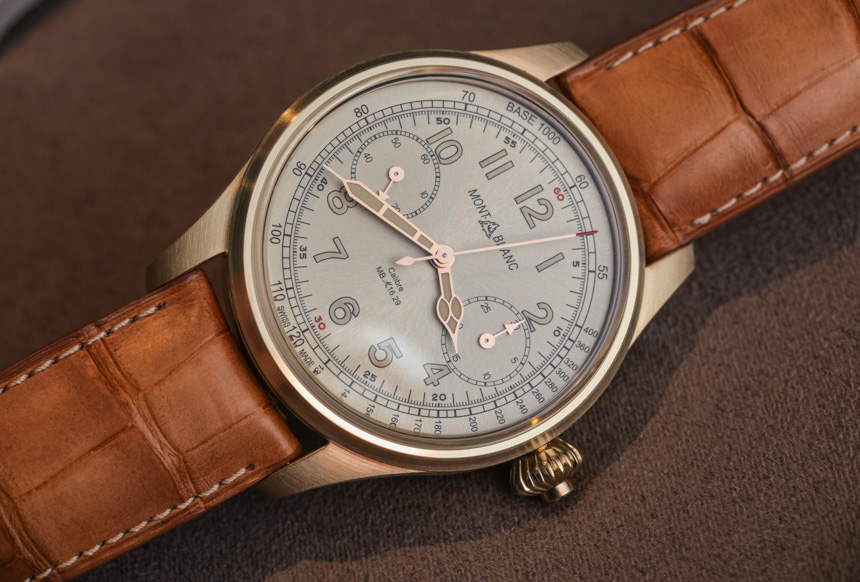
Once cased, the movement also undergoes Montblanc’s Laboratory Test 500 process, a rigorous, three-week ‘torture test’ of sorts designed to simulate the first year of the watch’s life, and ensure things are running exactly to spec before being delivered to the wrist. Montblanc is far from the first brand to do this – Omega has its ‘Master Chronometer’ certification, and Montblanc’s own big brother Jaeger LeCoultre has a 1000 Hours Test, for example, but even still – it’s reassuring to note that Montblanc stands behinds its in-house developed calibers.
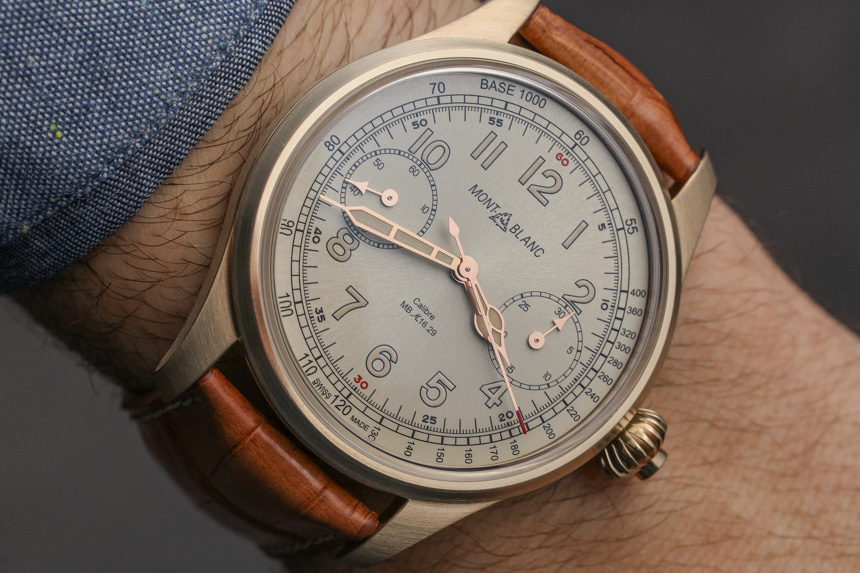
The 44mm size of the watch is likely to be its most divisive feature – which shouldn’t come as much of a surprise. However, with the movement measuring a few hairs under 40mm (it was a pocket watch movement, after all), the choice behind the case size appears to be one made out of necessity, and not the passing trend. Montblanc will only be producing 50 pieces of this very limited edition. Fans and collectors can scoop one up for the asking price of €27,500. montblanc.com


